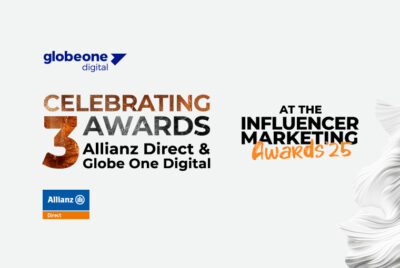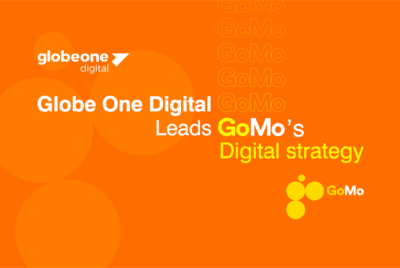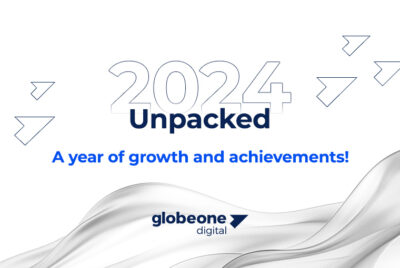Your Top Questions on The Metaverse, Answered.
31 март 2022
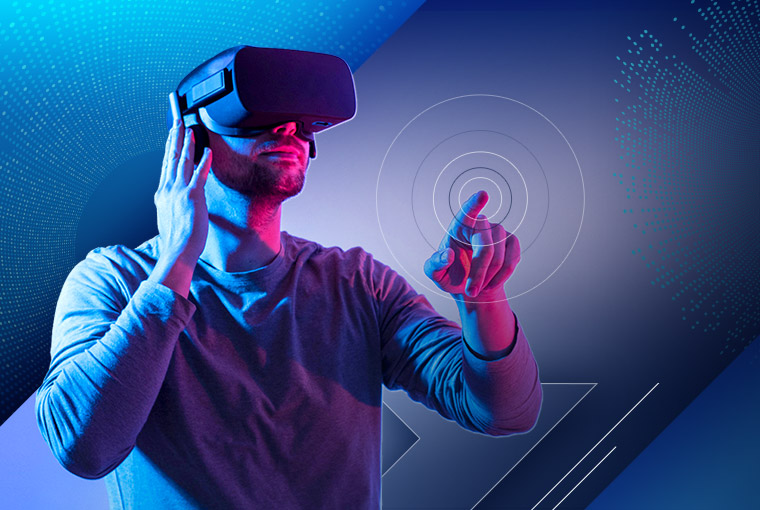
There have been quite a few conversations recently around the latest paradigm shift of the internet, namely the metaverse. Understandably, businesses, brands, as well as consumers have many questions around what it is, how it works, and most importantly: does it matter? And why? In line with our commitment to delivering leading-edge solutions to our clients that equip them for the future, our team answers some of the key questions regarding the metaverse right now, so as to better understand the reach, the potential, and the possibilities of the newest frontiers of cyberspace.
What is the Metaverse really?
To start, the ‘metaverse’ doesn’t completely exist right now! Some argue that it’s partly a dream for the future of online and partly a way to encapsulate current trends in online infrastructure — including the fast growth of real-time 3D worlds and the associated rise of development and tech like virtual reality (VR) and augmented reality (AR).
While definitions of the term differ and details of how the metaverse will be built, regulated or work is shrouded in skepticism and debate, what experts will tell you is that the only thing you really need to know about the metaverse is that it’s BIG: it will change the way we engage with information and, most essentially, with the internet. For that reason, many refer to it Web 3.0 — the next iteration of online — and Meta (formerly known as Facebook) said it best in terms of thinking of it as an embodied internet where you’re in the experience - not just looking at it.
In general terms, the metaverse is a network of persistent online 3D virtual worlds that, combining multiple different virtual spaces, uses technologies like virtual reality (VR) and augmented reality (AR) to build social connections, powered by a digital economy. The promise of the metaverse is to allow for a seamless convergence of our physical and digital lives, creating a unified, shared, virtual community where humans can work, play, relax, shop and socialize.
Introducing a sense of ‘presence’ to the internet via 3D avatars, holograms and synchronized virtual spaces that everyone can share and participate in from anywhere, it is predicted that the metaverse will enable you to: visit a friend’s virtual home and hang out using a VR headset; attend digital concerts with wearables like AR glasses; host your own party in an event space you’ve rented, with a DJ you’ve hired to play; participate in a meeting via your avatar; and, at the same time, manage your crypto portfolio and your finances — all inside the metaverse.
A combination of the Greek word ‘meta’ which means beyond and the word ‘universe’, the essential promise of the metaverse is to be an extension of the real world.
What's Driving the Growth of the Metaverse?
With people spending so much time in virtual meetings and the soaring use of video games, it is clear that the COVID-19 pandemic helped accelerate and normalize persistent, multi-purpose online engagement and communication — whether it be for work, exercise, socializing, entertainment, shopping, or education.
At the same time, a number of new technologies have enabled what appears to be an inflection point for the metaverse — including AR, VR, AI, 5G, blockchain and edge computing. Hardware like AR and VR headsets have become cheaper and more powerful, improving user experience, while blockchain has enabled digital currencies and non-fungible tokens (NFTs). The new ways to transact and own digital goods are allowing creators to monetize their activities through tokens, as well as participate in a democratic ownership economy.
In terms of younger Gen Z and Alpha, it is increasingly apparent that children are already growing up in proto-metaverses. Today, especially to younger generations, logging onto Fortnite, joining a chat with friends over a digital platform, or attending a birthday party in Roblox is just as social and ‘real’ an experience as any physical interaction.
It is this combination of technological, social and economic drivers that is resulting in the explosive interest in — and evolution of — the metaverse.
What's the Metaverse Like Right Now?
This is where things get tricky because one could argue that the metaverse doesn’t completely exist yet, and that it’s not a new phenomenon: it’s an evolving one. It’s also currently not one single, unified universe but rather de-centralized, independent platforms.
Online virtual worlds have existed for decades in the form of massively multiplayer online games (MMOs). Since 2003, Second Life allowed players to create avatars, interact with others in shared social spaces, and even collect in-game currency. More modern equivalents like Minecraft, World of Warcraft and Fortnite have hundreds of millions of users and, today, developers have pushed the boundaries of what a game is through hosting in-game events such as concerts and creating virtual economies with different types of utility tokens and virtual collectibles or NFTs.
Beyond games and blockchain, metaverse-like applications exist and provide people with secondary incomes. Axie Infinity is one play-to-earn game that many users play to support their income. Virtual productivity platforms are growing too, with Facebook and Microsoft announcing new ways to collaborate online. And Nike is preparing to sell virtual sneakers for avatars that walk around a virtual world such as Nikeland. The opportunities, it appears, are endless as the metaverse morphs into shape.
Which is the most popular metaverse?
The majority of popular metaverses currently exist in the realm of gaming and blockchain and include Axie Infinity, Sandbox, Illuvium and Somnium Space, to name a few. Let’s take a look at two of the most popular ones: Roblox and Decentraland.
Roblox
The gaming development studio and platform Roblox, established in 2004, provides perhaps the closest metaverse experience on offer right now, and is a good example of how it works, how it’s growing and how it makes money. The platform has over 40 million games and around 43 million daily users, who spend on average 2.6 hours a day. At peak usage, Roblox hosts 5.7 million concurrent users, the majority (67%) being under 16 years old.
Roblox’s primary goal is to create a platform where people can interact, through 3D virtual experiences that resemble reality. Users can create digital avatars, add clothes, build homes, chat with friends, and carry out everyday tasks like looking for work or going on adventures, while with its most recently released “spatial voice chat” it aims to encourage even more real-life interactions, through voice conversations.
Roblox makes money via purchases of its internal currency, Robux, by users, subscription fees from Roblox Premium, and commissions charged from developers when they make a successful transaction, i.e. when a user purchases a new game, experience or item. Robux can be earned and spent on the platform, as well as traded through a proprietary exchange into real-world currency (US dollars). Developers and creators can earn Robux via selling access to games and enhancements, engagement-based payouts, sale of content and tools between developers and selling items to users through the Avatar Marketplace.
Decentraland
Decentraland is a great example of integrating blockchain with virtual reality. An experimental, free-to-play, 3D experience game, that the MANA token has powered since 2016, it offers customizable land, art assets, and social activities for users to get involved with.
The platform has more than 800,000 registered accounts, around 500,000 monthly active users and is positioning itself to become the number one social network globally, used for social gatherings. There are 90,000 plots of land on the platform and a NFT defines each one. The possibilities with Decentraland are endless: from becoming a virtual real estate tycoon to hosting your own private island retreat, there’s no limit on what you can achieve in this immersive digital world.
One of the most interesting features of the platform is its full decentralization. In early 2020, Decentraland completed one of its initial goals, to allow the community to take over control and determine how the virtual world behaves. This was achieved by formalizing a DAO that proposes and votes for policy updates, features and content on the platform, so that any changes happen because the community voted for it, rather than any single developer deciding it is a good idea.
Who are the current metaverse users?
People are already engaging with proto-metaverse worlds today, mainly through gaming, the biggest titles being Fortnite, Roblox and Minecraft.
Compared to the average gamer (average age 38), audiences immersed into these three worlds are younger (average age 27) and slightly more likely to be male (51%). It is quite indicative that 86% of Roblox daily active users are under 25, and these early experiences in the virtual worlds could mean that they will grow into the residents and architects of the metaverse.
Proto-metaverse players spend more time socializing in games and social gamers play for longer –an additional 2 hours per month on average. As is often the case, this increased engagement translates into more in-game spending, making these audiences valuable for platforms and brands.
Arguably, these high-value, young consumers are hard to reach via traditional marketing and even social media, so it comes as no surprise that consumer brands and big tech companies are doubling down on the opportunities the metaverse provides.
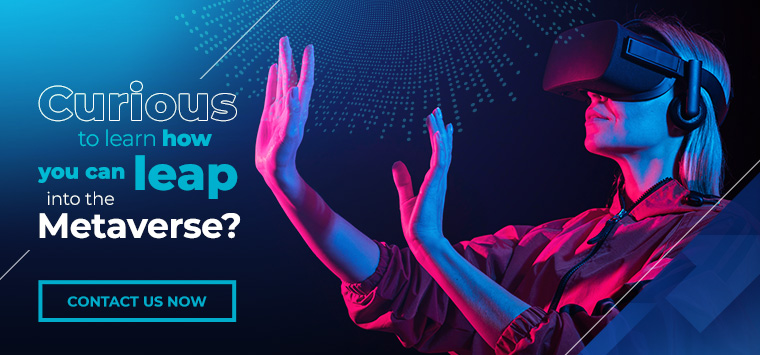
Is the metaverse just a fad? Or is there truly potential for investors and brands?
The hype around the metaverse is met with equal measures of cynicism— with many asking pertinent questions such as: Is the metaverse truly the next frontier for social interaction on the internet, or is it simply marketing? Is it being designed for the purposes and profits of (monopolistic) global companies? What’s the infrastructure, who is figuring it out, and what are the rules of governance? In other words, could this be all fantasy and no real play?
As the metaverse continues to grow however, there is an expectation for high-value, real-world commercial opportunities. In October 2021, the Web 2.0 metaverse was valued at $14.8 trillion.[1]
In addition to branding and in-game advertising, with multiple cross-chain possibilities, the virtual economy is believed to become as important as the physical economy.
In fact, it’s estimated that by 2024, the market could be worth $783.3 billion – nearly triple the size of the gaming software and services sector today, and not far off from becoming a trillion-dollar industry. If it were a country, it would be one of the largest economies in the world.[2]
From buying, renting, and even refurbishing property, for B2B and B2C entreprises the metaverse provides large-scale potential opportunities and growth via the meta-economy: one that by-passes physical constraints and traditional processes and expands access to the marketplace for consumers from emerging and frontier economies.
From a business perspective, just as it became crucially important to adopt and adapt to the social nature of Web 2.0, it appears that in order to survive and thrive in the new era of Web 3.0, entering the metaverse becomes not an if but a when — owing to its reach, its importance, its opportunities, and its relevance.
Reasons why brands should consider entering the universe include: incremental reach, especially amongst younger audiences in a high attention environment, brand immersion, through creating a 360 brand experience woven into the fabric of a world, additional sales channels, and new revenue streams, through the launch of virtual products.
How is marketing changing because of the metaverse?
Similarly to the need to become “digital-first”, the metaverse provides opportunities for brands to expand their reach, their story, what they do, and how they do it.
By utilizing emerging tools and applying the same skills they honed when first adopting social media, brands and marketers are encouraged to get ahead, through embracing the digital future, and develop a strategy on how to transfer the brand's activities into the virtual world.
Already, the largest proto-metaverses, like Roblox, offer brands previously unattainable opportunities to not only be more creative, immersive, experiential, and relevant, while also start building brand awareness and advocacy amongst a younger Gen Z and Alpha audience. As an example, The Wall Street Journal reported that Vans, launched a virtual skatepark in Roblox — seen by over 48 million visitors — that lets players try new tricks, and earn points to redeem in the virtual store to customize their avatar.
Likewise, the immersive environment of the metaverse also provides new possibilities for service businesses. Indicatively, Microsoft aims to expand its leading position over the professional software market by integrating IoT into the metaverse, along with digital twins and mixed reality, while JPMorgan opened a lounge in Decentraland, where avatars can watch experts talk about the crypto market, characterizing the opportunities in the virtual world as “limitless”.
How does one prepare for the metaverse?
While we may not be able to predict everything that’s going to come with the Metaverse as we are entering into a more substantive, immersive landscape, we can foresee that it is going to impact businesses, marketing practices, and the marketers who pioneer new strategies to propel brands into the future. It is important to start thinking about your business’s role in this evolving digital space, adopting a curious approach while balancing the risk-reward equation.
A few questions to consider include:
- How would your business model and organization be impacted if there was more time spent interacting, transacting and socializing in virtual worlds?
- If your business were in the metaverse, what value could you create for your consumers?
- Is there an opportunity to create new marketing channels through experiences, digital goods, sponsorships and a branded real estate presence?
- Do you have the in-house talent to help you navigate the metaverse? If not, should you build a team, and what would such team look like?
Any additional Questions?
Please get in touch!
[1]https://influencermarketinghub.com/metaverse-stats/#toc-0
[2] https://gda.capital/2021/12/20/how-big-is-the-metaverse/


